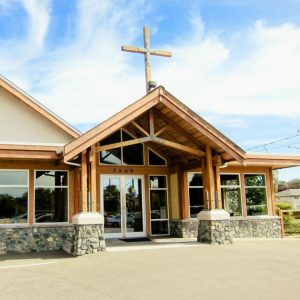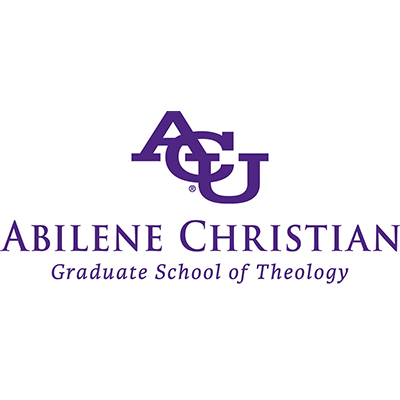The Church as Refuge
Two weeks ago, I made the decision to ask a young man to leave our church, and it has left me with a sense of unease. This severing of ties wasn’t due to doctrinal or theological differences, personality conflicts or any of the causes we might immediately consider. It was because he shot up heroin in our bathroom.
We had done the best we knew how to welcome Cameron (1) into the atmosphere of worship and fellowship on Sunday. We made sure that people were actively trying to connect with him. We ignored his outward appearance and looked for the best way to extend grace. We made space to bring him into a table full of people and food during our fellowship meal. At some point, he left those things behind and locked himself in a stall. As I struggled to communicate with him through the high, as I tried to creatively figure out how I was going to dispose of the paraphernalia littering the tile floor, as I did most of this with my 4 -year old daughter at my side, I found myself a minister divided. The part of me aching for Cameron, not wanting to see him turned away, had to contend with the part of me that is already serving many people at Shelbourne Street, including my own family, and my desire to keep them from harm.

A tent city in the shadow of the largest mainline Protestant church in Victoria.
We are not a particularly urban church, but we are becoming more familiar each year with a growing number of addicts and homeless that are immigrating to Victoria, BC. We occupy one of the warmest areas of Canada, and like much of the Pacific Northwest, we have become a year-round haven for people that are endangered or without resources. We are also the seat for the Provincial Government, a distinction that has led to many protests and the creation of “tent-cities” to serve as both shelter and statement in the public eye about the need to address the growing homeless and addicted populations (2).
Into this dry tinderbox, the drug Fentanyl has dropped like a lit match. In 2016, BC Health attributed this refined form of opiate to being the lead cause in a spike of overdose deaths that topped 900 in the province. New reports this May estimate the death toll for 2017 to rise over 1,400 (3). Two of those deaths belong to children of folks in our congregation. Our small, seemingly safe suburban church world is being flipped on its ear by the changes of our community, and the challenge to become a place of refuge.
God as refuge is an idea intertwined with what it means to be Israel; their very namesake has his origins as one on the run from vengeance who runs into God on the way. Israel’s consummate example of an anointed king spends both his early years and his later ones as a fugitive driven to the caves and valleys of the wilderness, who speaks of God as “my hiding place” (Ps.32:7). Yet the idea of Israel as a bringer of refuge is just as prevalent. In a culture where refugees, widows, orphans, and endangered people of all walks were left discarded and defenseless, God wove into Israel’s identity the role of invitation and responsibility.
One example of this is the establishment of the cities of refuge in the Torah and in Joshua 20. Among the inheritance of Levi, the forty-eight cities given to maintain the life of the priests and the knowledge of God, six are designated as cities of refuge. Exodus 21:14 points to the idea that for anyone under the threat of vengeance and death, the altar of God is the primary place of asylum, and many a person in the Davidic Dynasty is found clinging to its horns to avoid slaughter (4). Yet there is also an establishment of these cities, ringing Jerusalem, that have that same connotation; where the priests of God are, God’s refuge exists as well.
I believe that when God had these cities established, God had more in mind than just providing a place where people involved in an accidental death could go for protection. It was to affirm God’s desire for justice to be tempered with mercy in a merciless world (5). It was to provide Israel with a vivid image of their role as God’s people. It was to tie their identity as people in God’s refuge to actions as God’s refuge.
I wonder if the people of Hebron or Kedesh ever got tired of the folks showing up at their gates.
People who are running for their lives are often pretty messy. They have baggage, not the least of which is destruction coming on their heels. I wonder if the people in those cities struggled with the tension between their role as givers of refuge, and their desire to feel secure within their own walls. I wonder if the leaders of the city ever made hasty judgements, or dismissed people who were in need, because there were just too many other things to think about.
“In a shame or honour based society, there truly isn’t anything we can do to be included in society again. It is at the discretion of society as to whether they welcome us back in (6) .”

Many of us have accepted the awareness that Christianity is moving to the margins of western culture, particularly in North America. We feel this acutely in the city of Victoria, the capitol of the province with the lowest Christian affiliation of any type in Canada. At best, we are usually viewed as a positive oddity, perhaps even “quaint”. Many churches are at a crossroads as to whether we will continue to attempt to reclaim a piece of our influence of old, or whether we will seek a new voice in the margins. What we are finding there is that the margins are actually full of folks who need to seek a holy asylum.
We are also seeing the growing need for the Gospel we proclaim to be one of freedom from shame as well as guilt. The homeless I talk to in our city feel adrift; my colleagues in ministry who make it their calling to intersect the lives of the homeless and the addict talk to me of a great weight of shame pursuing them. Their identity, it seems, has become flawed, intertwined with destruction. The vengeance follows them from shelter to park, soup kitchen to safe injection site, until it runs them down.
The question Shelbourne Street wrestles with in response to what we see is this; “What might it look like for the church to be a people that would abandon, at least in part, our natural discretion in order to be able to welcome in the name of Jesus those who seek His asylum?” I believe this is not a question for our church alone, but for churches everywhere. What is the picture of church as refuge going to look like? How will we balance the care we give to those within the security of the family of God against the growing call of those who need that same adoption we possess? And what will we do when Cameron, or the next Cameron, comes back?

About the author:
Travis Hutchinson serves on the ministry staff at the Shelbourne Street Church of Christ in Victoria, British Columbia in Canada. He completed his undergraduate and MACM at Abilene, and is currently pursuing an MDiv Equivalency in preparation for doctoral studies. He has been married to his incredible wife, Nicole, for 17 years and is the father of 5 fantastic children.
- Not his real name.
- Brian Hutchinson, ‘I Chose to Be Homeless’: Victoria’s Notorious Tent City Shrinks as Deadline for Dismantling Approaches, (National Post, August 5, 2016).
- Scott Brown, B.C. Opiod Crisis; Province on Pace for more than 1,400 Overdose Deaths in 2017 (Vancouver Sun, May 31, 2017).
- Feinberg, Charles Lee, The Cities of Refuge (Bibliotheca Sacra, 104 no. 413): 37.
- Ibid, p.46
- This was a quote from Maggie Goode, in the discourse of our current class with Dr. Chris Flanders on “Witness in Global Contexts.”
